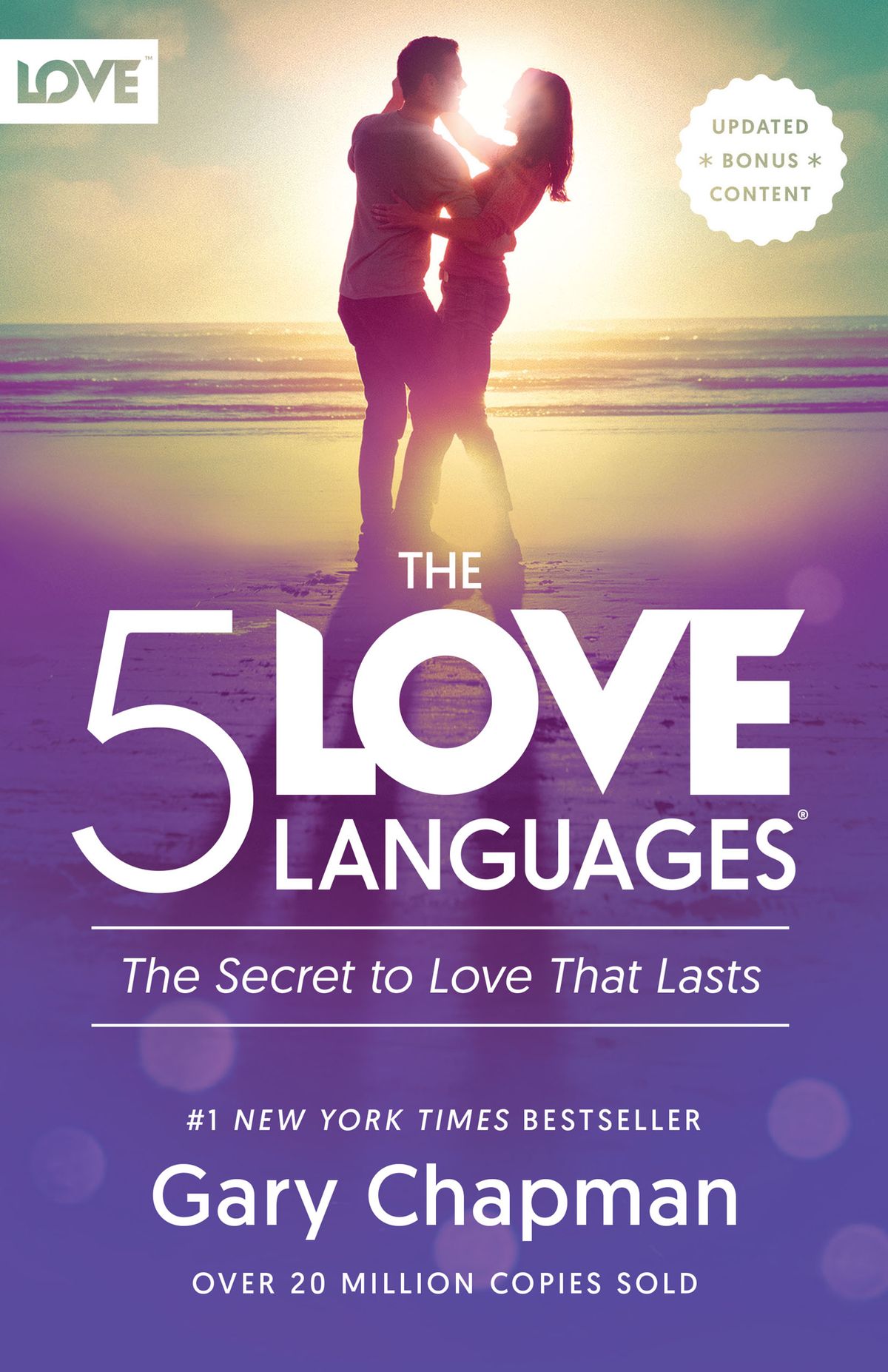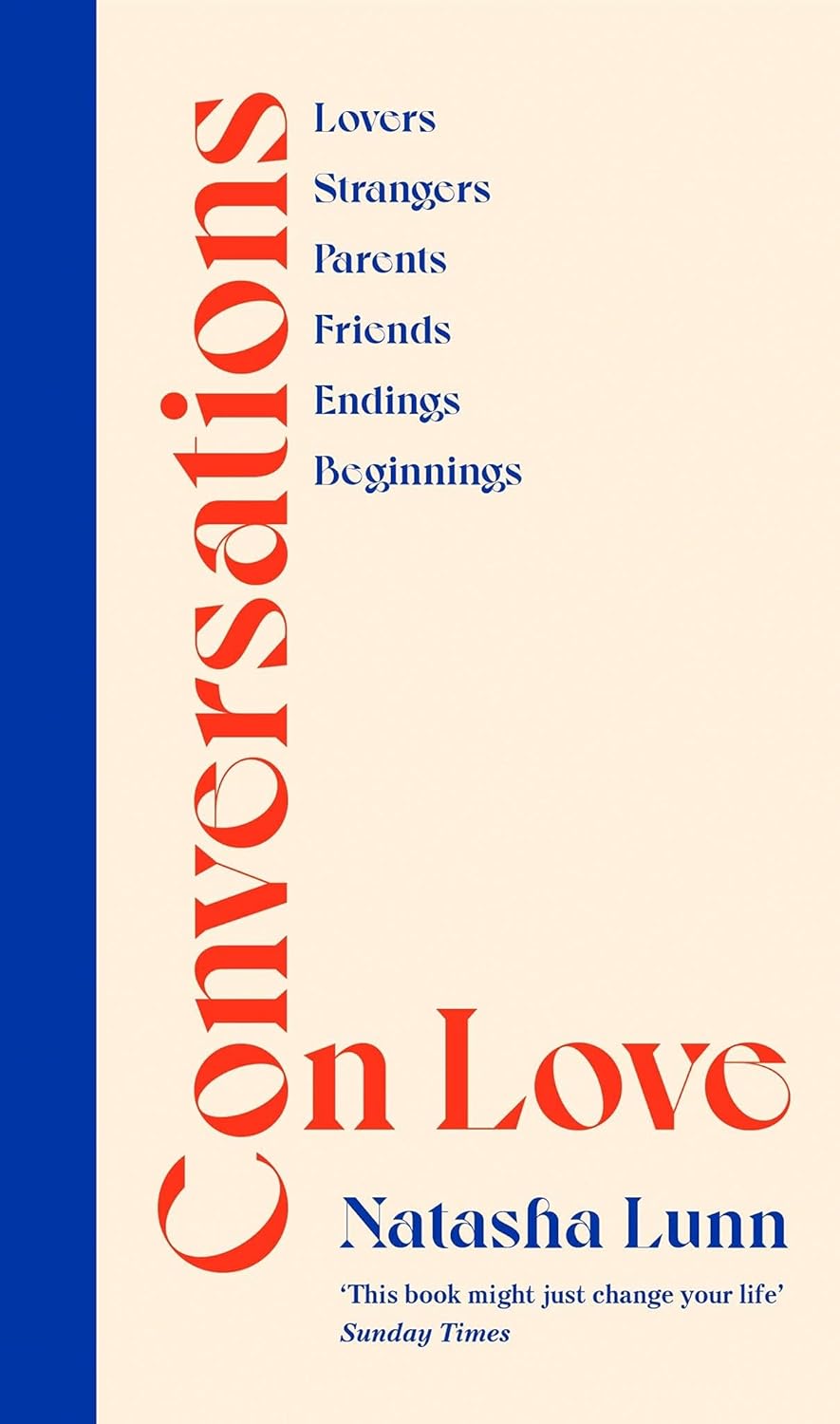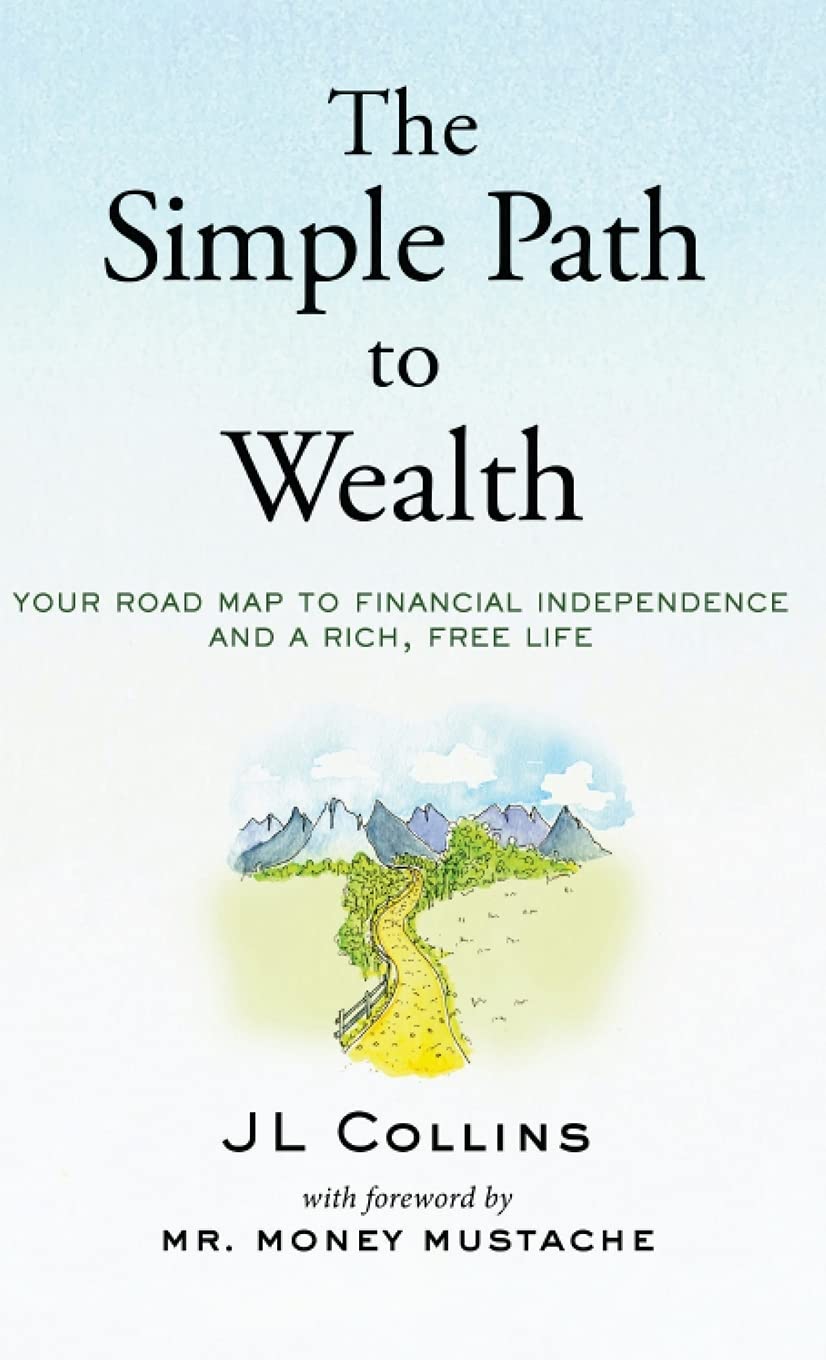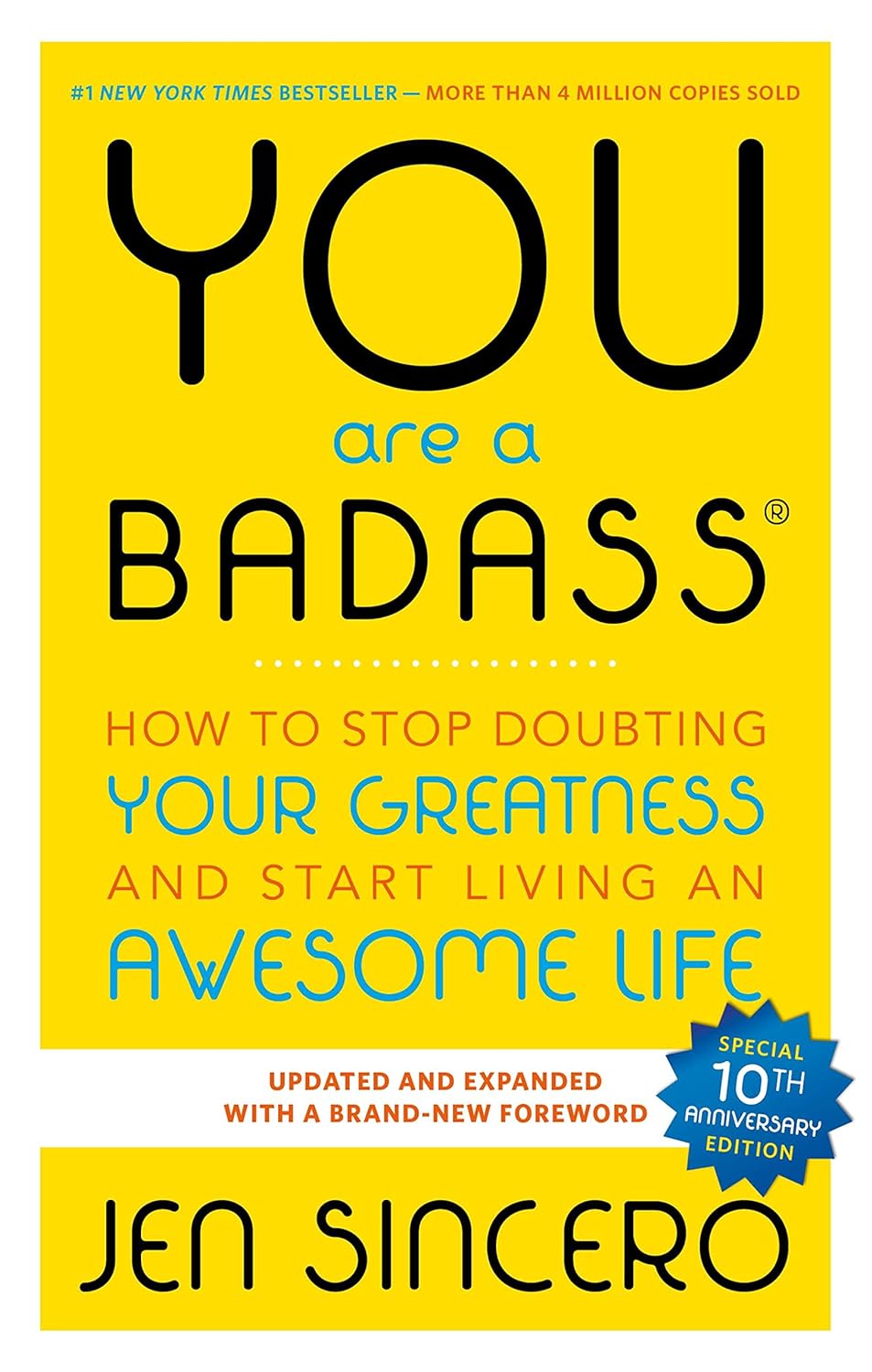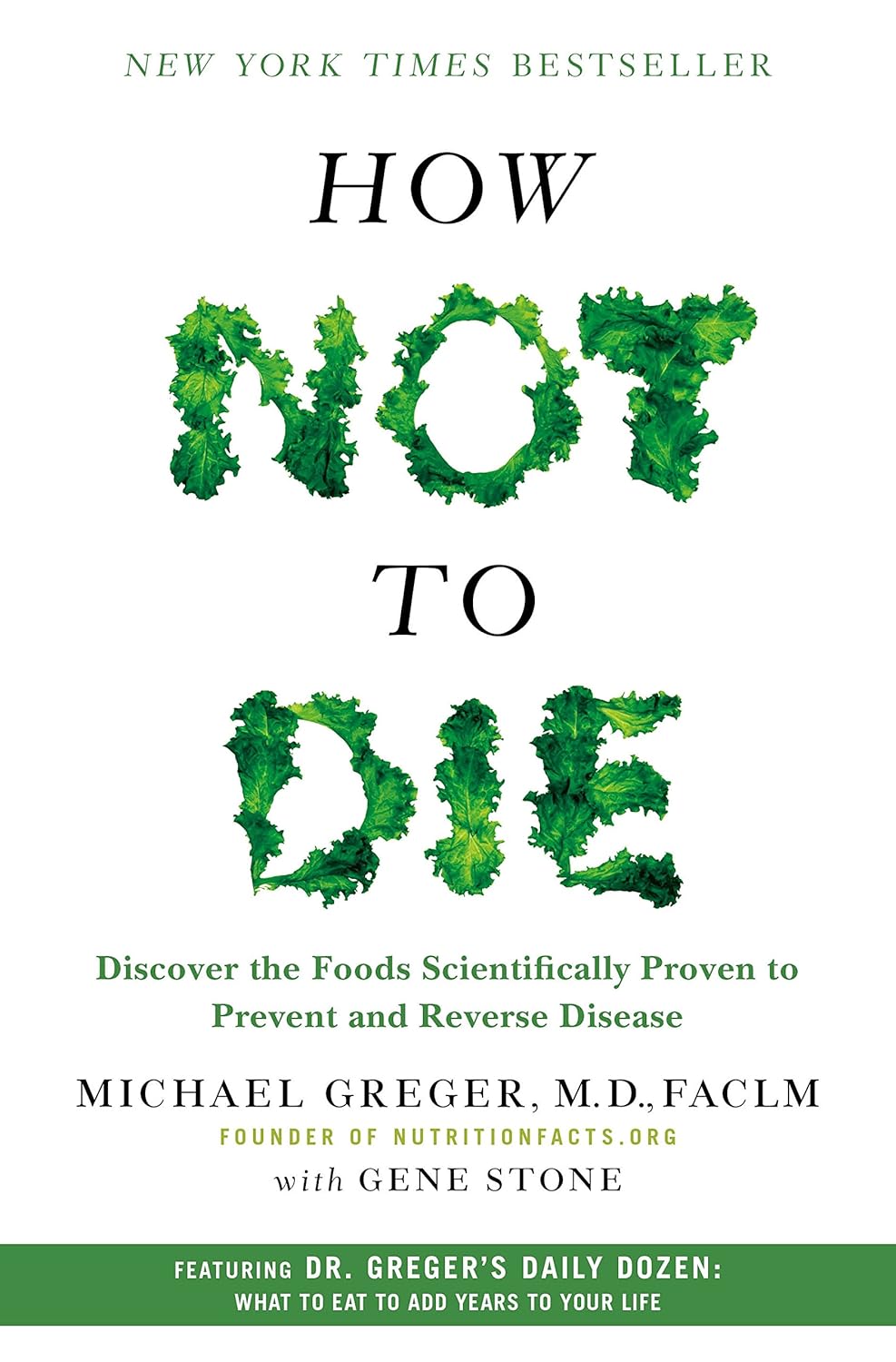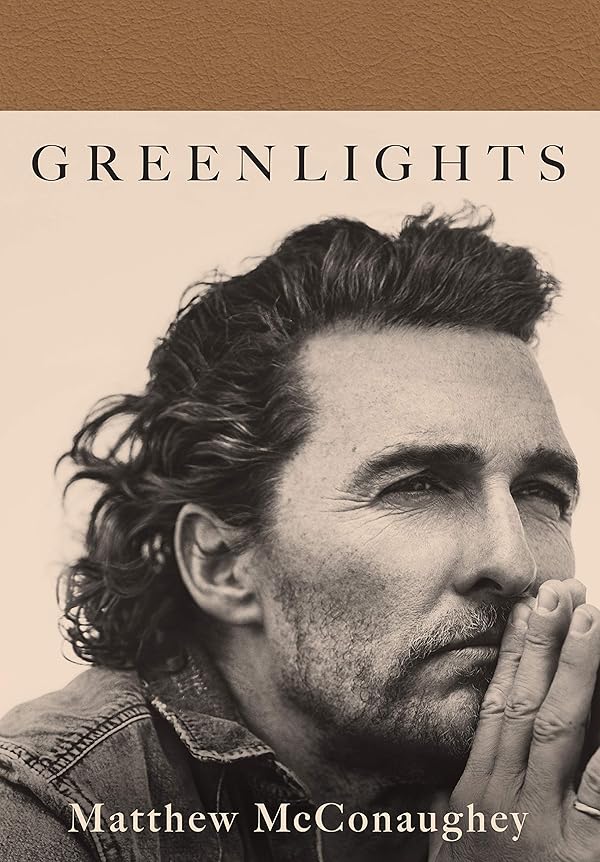
Buy The Book
Chapter
- ✦ To Life
- ✦ How Did I Get Here?
- ✦ What’s a Greenlight?
- ✦ Part One: Outlaw Logic
- ✦ Part Two: Find Your Frequency
- ✦ Part Three: Dirt Roads and Autobahns
- ✦ Part Four: The Art of Running Downhill
- ✦ Part Five: Turn the Page
- ✦ Part Six: The Arrow Doesn’t Seek the Target, the Target Draws the Arrow
- ✦ Part Seven: Be Brave, Take the Hill
- ✦ Part Eight: Live Your Legacy Now
Greenlights

About
Matthew McConaughey, the acclaimed actor, shares his life lessons and philosophies in his memoir, “Greenlights.” It’s not a conventional autobiography but a collection of stories, insights, and bumper stickers gathered from his life’s journey, with a focus on how to navigate life’s challenges.
McConaughey presents an approach to life centered on recognizing and embracing life’s “greenlights,” those moments of affirmation and success, while also understanding that yellow and red lights – the obstacles and setbacks – are inevitable and can eventually lead to growth. He encourages readers to keep a journal, find humor in difficulties, and strive for personal evolution. Through candid anecdotes and reflections, McConaughey’s writing promotes resilience, individuality, and finding meaning in the chaos of life.

Spark
Learn
Review
✦ To Life
In this opening, I share my journey of striving, learning, and evolving from ignorance to knowledge, always branching off to another challenge. I emphasize the significance of educating the unrefined about beauty and value, constantly reassessing who benefits. My upbringing in a small town, lacking formal education but rich in “street smarts,” taught me the importance of resourcefulness in pursuing dreams.
I advocate spending time creating a personal formula to navigate life, viewing the world as interconnected where everyone matters. Life’s riddle has been a focus for me, keeping a diary of clues. My notes capture successes, failures, and moments of awe. It is a guide on how to be fair, reduce stress, have fun, and minimize harm. The notes include how to achieve personal desires and find life’s meaning and how to be more authentic.
I am against tradition and conventional advice. Instead, I share experiences and insights that can be understood and adopted to change one’s reality. My approach is lightened with humor to deal with pain and loss. I’ve learned to manage setbacks, stepping in shit and scraping it off to carry on.
I share anecdotes and “bumper stickers” from my life, like pieces of collected wisdom. These are reminders of how I’ve approached life, consistently finding satisfaction. This is an invitation to join me in exploring what I’ve witnessed, dreamed, and given, offering medicine that tastes good and laughs through tears. Ultimately, this section is my love letter to life.
✦ How Did I Get Here?
I set the stage by sharing some personal facts that have shaped my character. I’m the youngest of three boys, raised by parents who divorced and remarried each other multiple times. “I love you” was a common phrase in our household, always meant sincerely. As a child, I was disciplined physically, even to the point of bleeding, for minor offenses like applying a Cracker Jack tattoo.
I recount a time when I threatened to run away from home, only to find my parents packing my bags for me, indicating their unique parenting style. I also reveal that my father wasn’t present at my birth, humorously instructing my mother not to name me “Kelly” if I were a boy.
Becoming a father was my only ambition. I learned how to swim by being thrown into a river, and my resourcefulness was tested when my mother refused to buy me new tennis shoes.
I delve into more delicate experiences such as being blackmailed into sex at fifteen, an experience I thought would condemn me to hell. There was also a molestation by a man at eighteen.
I share some eccentric experiences, like doing peyote in Mexico, needing seventy-eight stitches from a veterinarian after a tree-related accident, and getting arrested for bongo playing naked. I also talk about college applications and feeling like the world conspired to make me happy.
I express my belief in mankind’s benevolence and the importance of truth. I was raised with a practical philosophy, even if it bent reality a bit. The love in my family, though sometimes intense, was always genuine.
I emphasize the inevitability of death and the importance of approaching life with purpose. This section introduces the idea of “greenlights” as approvals and affirmations in life. “Greenlights” can be yellow and red lights in disguise. I touch on the importance of skill, timing, intuition, karma, and fate in catching “greenlights.” The real artistry is knowing when to push forward, adjust, or accept fate. I view life as part of a plan and believe challenges can lead to blessings. This book is a guide to finding “yeses” in a world of “nos” and finding “greenlights”.
✦ What’s a Greenlight?
“Greenlights” signify advancement and affirmation, acting as the go-ahead in life. They are approvals, praise, gifts, and anything that fuels our passions. They are effortless moments and summer freedom, saying “yes” and giving us what we desire.
However, I explain “greenlights” can be misleading, appearing as yellow or red lights. These include cautions, detours, interruptions, disagreements, sickness, pain, full stops, failures, and suffering. I acknowledge our aversion to these, as they slow us down or halt our progress, presenting hardships and winter confinement. Yet, I clarify that these too can provide what we need.
I share my belief that mastering “greenlights” requires skill, timing, and sometimes, fate. Skill involves intent, context, consideration, anticipation, resilience, speed, and discipline. I propose we can attract more “greenlights” by identifying red lights and altering our course to avoid them, or by engineering and planning for them through determination, hard work, and mindful choices.
I underscore that timing, both worldly and personal, plays a crucial role. We can catch “greenlights” when aligned, on the correct frequency, and flowing smoothly, or simply by luck. Intuition, karma, and fortune can also influence “greenlights” in the future, and sometimes, it’s a matter of destiny.
I discuss the importance of navigating life by getting relative with the inevitable. While inevitability is fixed, our response is adaptable. We can persist in our pursuit, pivot to a new approach, or concede to fate. Satisfaction lies in choosing the right action at the right time.
I state that life is part of a plan, and challenges eventually become blessings. Red lights lead to “greenlights,” destruction leads to construction, death leads to birth, and pain leads to pleasure. It’s a matter of perspective and engagement—persist, pivot, or concede—a choice we make each time.
Ultimately, I present “Greenlights” as a guide to catching more favorable moments in a world filled with obstacles and recognizing that what seems like a setback can actually be a step forward. I believe that yellows and reds can eventually lead to “green.”
✦ Part One: Outlaw Logic
I highlight the need for a personal formula to navigate existence. I was raised on existential outlaw logic—fictitious physics and carnations of malaprops, where the heart knows what it knows—if it wasn’t true, it ought to be.
As a kid, I got whipped until my butt bled for putting on a Cracker Jack tattoo at the age of ten, even though I was just expressing myself. My father told my mother, “Only thing I have to say is if it’s a boy, don’t name him ‘Kelly.’” I share these stories not as complaints, but as ingredients and influences. I learned resilience and consequences; my unique upbringing taught me how to bend a bit, and it’s a skill that has served me well.
There’s a delicate balance in life. The golden rule and moderation are good ideas but they have loopholes, especially with the “do unto others” part. Not everyone has the same wants. One man’s food can be another’s poison. To know how to navigate the inevitable—death—I began by getting relative with life. I emphasize making peace with life’s unified destination by focusing on my procession. In other words, write your eulogy. Live it.
I talk about “greenlights” not just as affirmations but as potential disguises. Realizing this is a “greenlight” in itself. Problems become blessings in hindsight. All destruction turns to construction; all death leads to birth; all pain results in pleasure. The key lies in how we engage with the challenge: persist, pivot, or concede. Ultimately, this section emphasizes seizing opportunities and understanding when “no” might actually be “yes.”
✦ Part Two: Find Your Frequency
In this section, I recall my year as an exchange student in Australia, beginning with my arrival at the Sydney airport and meeting the Dooley family. The parents, Norvel and Marjorie, seemed welcoming, along with their son, Michael, and his girlfriend, Meredith. However, their home was not in Sydney as I anticipated but a long drive away in a remote area.
I recount various interactions with the Dooleys, highlighting their eccentricities and rigid expectations. I soon found myself at odds with their values and started skipping school and losing my sense of self. Attempting to regain control, I adopted extreme habits: becoming vegetarian and abstinent. It was not effective and I grew more and more uncomfortable and isolated.
One evening, Norvel declared that I should refer to him and Marjorie as “Mum and Pop.” This was the breaking point. I finally asserted myself and rejected their demand, realizing I needed to honor my own values.
That night, I experienced how my resistance would play out. Marjorie began shrieking at the top of her lungs that I would not call her “Mum”. It was decided that I needed to leave and the head of the Rotary Club was going to help me find a new home.
Everything was set and approved. I was to leave on a Tuesday. However, that evening, Norvel told me that I was staying with them whether I liked it or not. As confusing and upside down as it was, I knew I needed to stand up for myself in order to get my life back.
I went to Harris, the Rotary Club president, to ask for help to leave as soon as possible. After telling him everything, he helped set me on the right path. My time with the Dooleys was reaching a turning point. The exploration of cultural differences with the family, the time spent in solitude, and the struggle for selfhood were leading to a necessary moment of resolution. I was finding myself as a result of all the friction and the greenlights were starting to turn my way.
✦ Part Three: Dirt Roads and Autobahns
I delve into the transformative experience of filming “Dazed and Confused” in Austin, Texas, marking a significant shift in my life’s trajectory. Quitting college, I initially hesitated, unsure if acting was the right path. However, after a three-day period of contemplation, I concluded that I would rather bet on myself. I committed to the opportunity.
Living in an $800-a-month rented condo, I embraced the local culture, frequenting biker bars and pool halls, and developing a routine of early rising and running. I recount an incident where, despite being broke, I chose to pay for a stranded woman’s groceries, illustrating my approach to life.
I share an anecdote of a profound dream that steered me away from a law career and towards acting, interpreting it as a sign to pursue what I wanted rather than what I thought I should do. The filming of “Dazed and Confused” proved to be a valuable experience, teaching me the art of filmmaking. It was a time of creativity and collaboration, forging lifelong friendships and gaining invaluable insights into the industry.
I express my inclination towards simple pleasures and the desire to create a meaningful life beyond financial gains. My love for storytelling and the pursuit of roles aligned with my personal ethos.
This section reflects on pivotal moments, decisions made, and the development of a personal philosophy centered on self-belief and the courage to embrace the unknown, thereby paving the way for future endeavors.
✦ Part Four: The Art of Running Downhill
I transition from acting to writing and directing, marking a new chapter. I initially had no interest in writing a book until 1-22-89, yet I share stories, insights, and philosophies that can be objectively understood, and if chosen, adopted. I offer it not as advice but as a playbook.
I address the “art of running downhill,” a skill that seems easier than it is. Momentum helps, but control is key. It’s about trusting your feet, maintaining balance, and not overthinking it. The faster you go, the more you must adapt and avoid getting too far ahead or behind.
I emphasize that running uphill prepares you for running downhill. Success demands responsibility. It’s easy to take credit when things go well, but true ownership means accepting blame when things go wrong. This requires maintaining a steady center and navigating challenges with care. I talk about keeping your ship tight. It’s about not tying your self-worth to the validation of success.
I recall my involvement in the film “A Time to Kill,” I found that I had a great performance, but the box office was not as successful. So I realized I could not attach my self-worth to the validation of the success of the product.
I touch on “the arrow doesn’t seek the target, the target draws the arrow,” highlighting fate’s role. It’s about being open to opportunities and recognizing that you might not always be in control, but you can steer the course. Trust what you want, trust what you don’t. It will teach you who you are, where to go, and what not to chase. It is easier to create your routine if you believe in it and that helps to draw the right target.
I underscore the importance of preparation. If you do what you can with what you have, where you are, you’ll always be prepared. I touch on the benefit of being imperfect. The more things we do well and right, the more immune we can become. Then the more immune we become to taking the necessary chances and risks to maintain a healthy and sustainable level of satisfaction.
This section is about navigating success and failure. It’s about mastering the skill of running downhill by staying grounded, taking responsibility, and embracing the unpredictable nature of life.
✦ Part Five: Turn the Page
I navigate the shift from being primarily in front of the camera to stepping behind it, delving into producing, writing, and directing. There’s an exploration of control and responsibility, and I emphasize the importance of fully inhabiting the role of a director and viewing all elements of production with an objective understanding. I reveal my approach to screenwriting, which is built on discovery and knowing a character so well that I could represent their experience effectively.
I then recount my approach to character selection. Rejecting roles that didn’t connect or serve a purpose, I aimed for parts that were substantial. In this period, I came across a film by Linklater called “SubUrbia”. I liked it. And I liked the idea of working with Linklater so I offered myself for free because the low budget could not pay me.
I was looking for a fresh challenge. After “Dazed and Confused”, I felt restricted in my acting roles, often typecast. The desire to explore characters outside my established image led to a career shift where I sought diverse roles. I aimed to defy expectations. I turned down roles. I even turned down the one’s they weren’t offering to me.
My time working with Ron Howard on “EDtv” and Steven Spielberg on “Amistad”, gave me the insight I needed to recognize there were times I could say “no”. I felt that my job was not only to say yes to the opportunity, but it was my job to earn the job.
I share anecdotes and insights on how a change in direction can lead to unforeseen opportunities and renewed creativity, and the process of reinvention through diverse creative roles.
✦ Part Six: The Arrow Doesn’t Seek the Target, the Target Draws the Arrow
I reflect on the unpredictable nature of life and the importance of surrendering to the journey rather than forcing a specific outcome. I share an experience from filming “Sahara” where I initially resisted director Breck Eisner’s vision, leading to creative differences. But after the situation was solved, the arrow drew the target.
I emphasize the significance of trust and belief. In my own process and what I have faith in, this allowed me to connect more profoundly with the work. With that insight, I recount my audition for “Dallas Buyers Club”, initially skeptical about my suitability for the role of Ron Woodroof, but I approached the process with an open mind. After some discussions, the director Jean-Marc Vallee believed I had what it takes.
There’s an affirmation of the actor’s role as a servant to the story. This role required me to shed vanity and ego. The part included transforming physically and mentally, and embracing discomfort for the authenticity of the character. This included losing weight to look sick, to fully embody the character’s struggle with AIDS.
The narrative underscores the concept of the “arrow doesn’t seek the target, the target draws the arrow,” meaning that sometimes, the path chooses you rather than the other way around. And the trust of others can draw the arrow. The acceptance of the role of Ron Woodroof and the success that followed reinforced my belief in destiny. The transformation was not just for the character but myself as well. By letting go and surrendering to the process, I was drawn to a life-changing experience.
I highlight the power of saying yes to unexpected opportunities. These opportunities can lead to fulfilling personal and professional growth. The process can lead to unexpected opportunities, renewed creativity, and a deeper understanding of oneself. The message emphasizes embracing what is and accepting what is not. The story underscores the profound truth that the most significant journeys are often those we least expect.
✦ Part Seven: Be Brave, Take the Hill
In this part, I discuss the courage to embrace challenges. It stems from an experience during the filming of “We Are Marshall”. As I was about to leave for Huntington, West Virginia, to begin production, I felt a reluctance. My dad had passed away just five weeks before, and I was not sure if I was ready to throw myself into work.
However, as I stood there conflicted, a friend asked me, “What do you want to do?” Without hesitation, I knew I wanted to go. Recognizing that confronting the challenge was the necessary action, I knew that it was what my dad would want me to do.
There’s an exploration of the power of choice and the significance of taking on difficult tasks. I highlight a common human inclination to avoid challenges, but I underscore the transformative potential of confronting fears and seizing opportunities, even when those opportunities may seem daunting. I share that I had signed on to play the role of Coach Jack Lengyel months before my dad died, and I knew I could not back out of it.
I was drawn to the story. I appreciated how everyone worked together, and how they used football as a way to express themselves. The community’s perseverance was something I wanted to be a part of. I recall how the people of Huntington embraced me and I knew I was where I needed to be. I tell the story of the plane crash, the team and families affected by it, and how the town kept moving.
The essence lies in the belief that the most rewarding experiences often come from pushing oneself beyond perceived limits, reinforcing the idea that bravery is not the absence of fear but the willingness to act despite it. The town of Huntington and the role I played in “We Are Marshall” gave me the strength I needed. I was doing what my dad would have wanted me to do, and that felt good. The act of simply moving forward is the most important.
✦ Part Eight: Live Your Legacy Now
I explore the idea of crafting a life story worth telling while one is still living it. I emphasize the importance of focusing on what matters in the present, rather than waiting until the end to assess one’s impact. If I write my eulogy today, I’m going to live that story.
There’s an advocacy for conscious living and recognizing the power of each moment to contribute to a meaningful life. The goal is to pursue personal fulfillment and make choices that align with one’s values, ensuring no regrets when reflecting on one’s journey. So, to live my legacy now, I should live every day the way I want to be remembered.
I touch on the concept of legacy as an ongoing process of self-creation and contribution to the world. If I don’t like what I’m writing, I can edit it. I can rewrite it. I can add characters. I can create the settings. The world is my workshop, and I can start today.
The discussion suggests that life is a continuous opportunity for growth and positive change. My last day is not defined on what I did that day, but my life as a whole.
This isn’t a guide for living a perfect life, but an invitation to embrace the present and to shape a legacy that reflects one’s true self and deepest values. I hope these stories, poems, bumper stickers, insights, and prayers, give you pause to remember what is most important to you. I hope this is a greenlight to see the greenlights in your life. If not, I hope one shows up, or if it was always there, you get the chance to see it.
I want my life to be a testimony to “what I have been up to” not what I have been. I want the world to say he was a good man. He was a loving dad. A generous and caring husband. I want my life to show I’ve given the best in life to create a good life. I want to be remembered as a hero to humanity and a model for mankind.
For People
– Aspiring Actors
– Recent Graduates
– Individuals Seeking Self-Improvement
– Fans of Autobiographies
– People Facing Life Transitions
Learn to
– Increased Resilience
– Enhanced Self-Awareness
– Improved Storytelling Ability
– Greater Appreciation for Life’s Journey
– Enhanced Communication Skills





